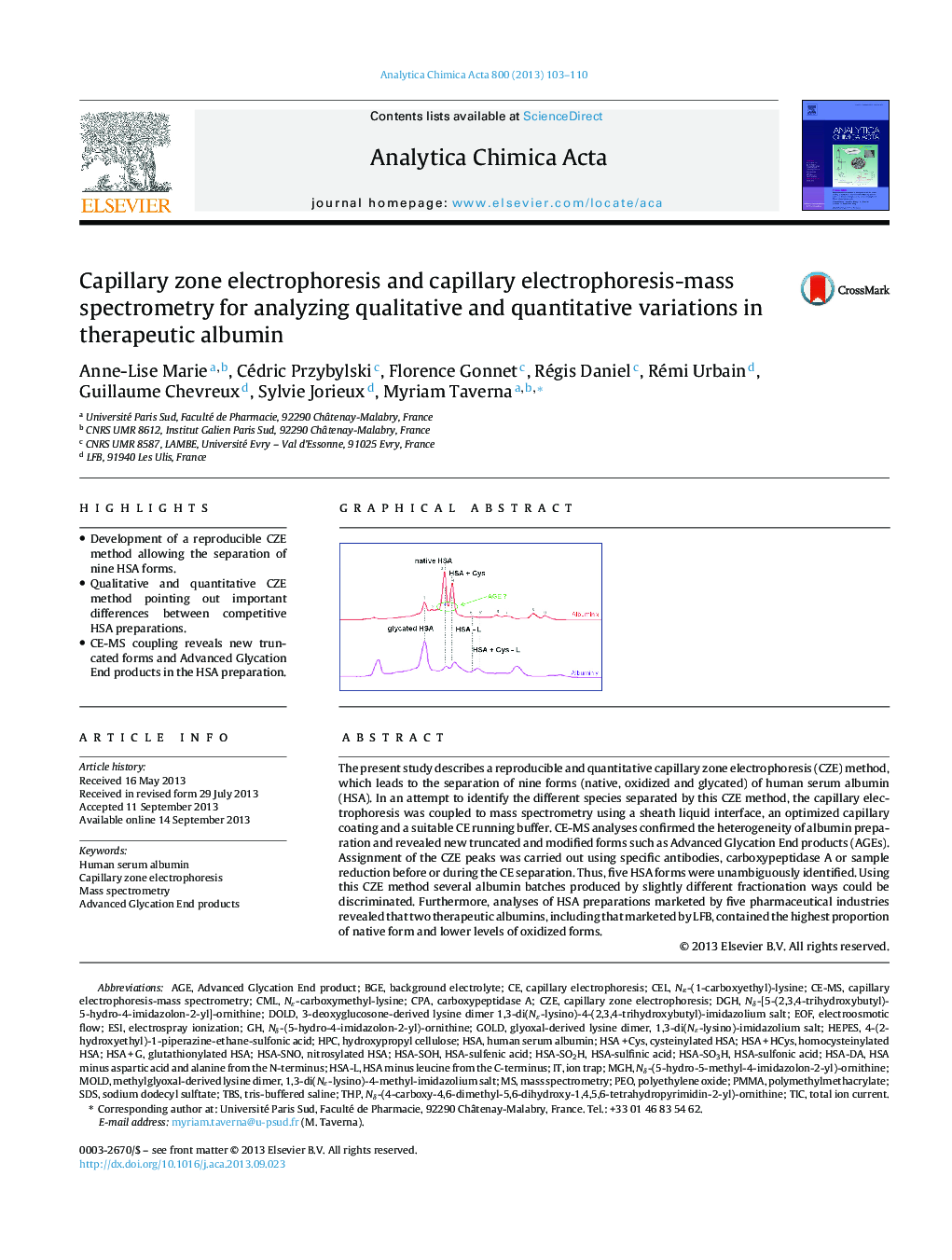| کد مقاله | کد نشریه | سال انتشار | مقاله انگلیسی | نسخه تمام متن |
|---|---|---|---|---|
| 1164384 | 1491032 | 2013 | 8 صفحه PDF | دانلود رایگان |

• Development of a reproducible CZE method allowing the separation of nine HSA forms.
• Qualitative and quantitative CZE method pointing out important differences between competitive HSA preparations.
• CE-MS coupling reveals new truncated forms and Advanced Glycation End products in the HSA preparation.
The present study describes a reproducible and quantitative capillary zone electrophoresis (CZE) method, which leads to the separation of nine forms (native, oxidized and glycated) of human serum albumin (HSA). In an attempt to identify the different species separated by this CZE method, the capillary electrophoresis was coupled to mass spectrometry using a sheath liquid interface, an optimized capillary coating and a suitable CE running buffer. CE-MS analyses confirmed the heterogeneity of albumin preparation and revealed new truncated and modified forms such as Advanced Glycation End products (AGEs). Assignment of the CZE peaks was carried out using specific antibodies, carboxypeptidase A or sample reduction before or during the CE separation. Thus, five HSA forms were unambiguously identified. Using this CZE method several albumin batches produced by slightly different fractionation ways could be discriminated. Furthermore, analyses of HSA preparations marketed by five pharmaceutical industries revealed that two therapeutic albumins, including that marketed by LFB, contained the highest proportion of native form and lower levels of oxidized forms.
Figure optionsDownload as PowerPoint slide
Journal: Analytica Chimica Acta - Volume 800, 24 October 2013, Pages 103–110